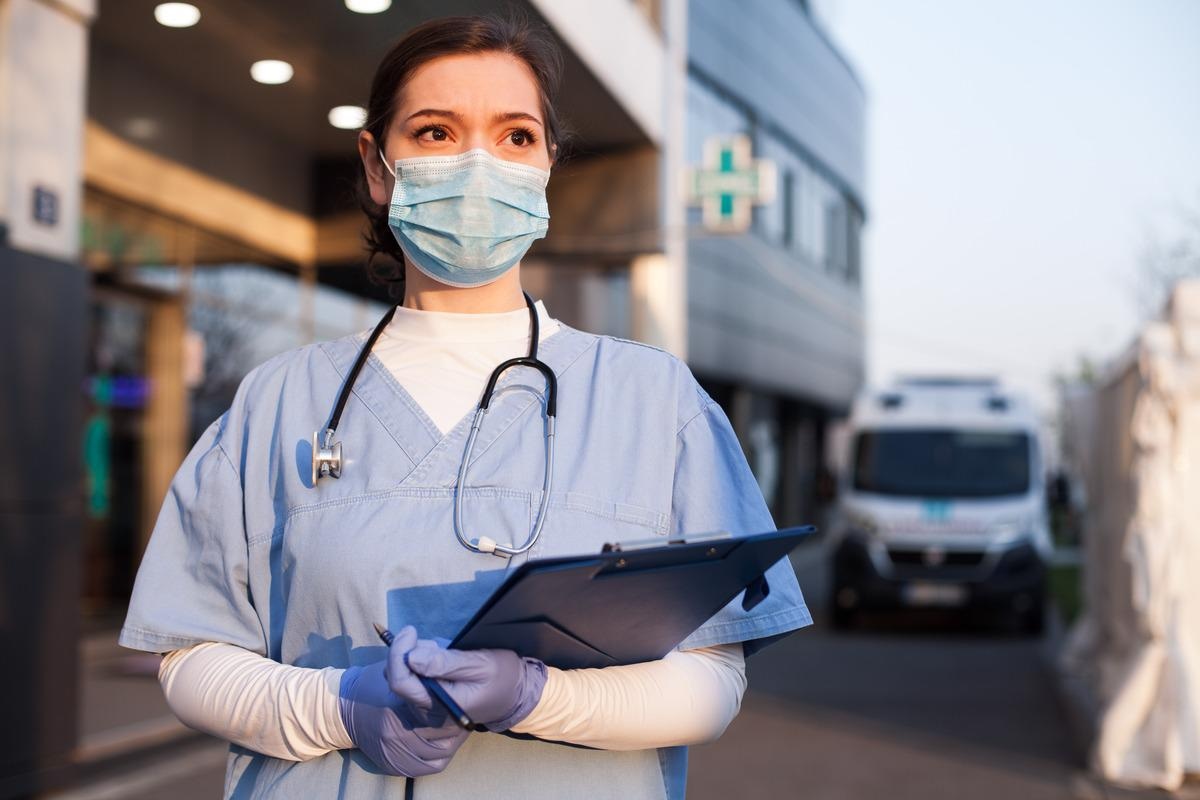A recent study conducted on healthcare workers from Vancouver, Canada, has demonstrated that coronavirus disease 2019 (COVID-19) vaccination together with non-pharmaceutical infection control measures is highly effective in reducing the risk of severe acute respiratory syndrome coronavirus 2 (SARS-CoV-2) infection. Importantly, the findings highlight that healthcare workers can achieve sufficient protection from non-pharmaceutical control measures irrespective of vaccination status.
 Study: Healthcare worker risk of COVID-19: A 20-month analysis of protective measures from vaccination and beyond. Image Credit: Cryptographer/Shutterstock
Study: Healthcare worker risk of COVID-19: A 20-month analysis of protective measures from vaccination and beyond. Image Credit: Cryptographer/Shutterstock

 *Important notice: medRxiv publishes preliminary scientific reports that are not peer-reviewed and, therefore, should not be regarded as conclusive, guide clinical practice/health-related behavior, or treated as established information.
*Important notice: medRxiv publishes preliminary scientific reports that are not peer-reviewed and, therefore, should not be regarded as conclusive, guide clinical practice/health-related behavior, or treated as established information.
The study is currently available on the medRxiv* preprint server whilst the article undergoes peer review
Background
The COVID-19 pandemic caused by SARS-CoV-2 has caused severe damage to the healthcare systems worldwide. Because of higher occupational exposure to the virus, healthcare workers are at particularly high risk of developing COVID-19. According to the World Health Organization (WHO) report, about 115,500 COVID-19 related deaths occurred among healthcare workers during the pandemic.
Although several potential vaccines have been made in record time and speed to control the viral spread, continuous emergence of novel viral variants have been found to affect the vaccine efficacy in real-world pandemic setups. Moreover, the vaccination data obtained from 119 countries has shown that only 40% of healthcare workers are fully vaccinated so far and that there is a significant difference in rate of vaccination between socioeconomically deprived and privileged countries. For better and wider protection of healthcare workers, many countries have strictly implemented occupational and public health measures together with infection prevention and control measures, including use of personal protective equipment (PPE), medical mask, gloves, eye shields, and droplet and contact precautionary measures.
In the current study, the scientists have estimated the rate of SARS-CoV-2 infection among healthcare staff working at the Vancouver Coastal Health region, British Columbia, Canada. They have specifically considered occupational exposure, testing availability, vaccination rate, and vaccine efficacy for the analysis.
Study design
The study included all healthcare workers who had been tested for SARS-CoV-2 infection between March 2020 and November 2021. The COVID-19 vaccination status of each worker was assessed for the analysis. For the comparative analysis, community-level COVID-19 incidence and vaccination details were also obtained.
The vaccination of healthcare workers in Vancouver started in December 2020. Nearly all workers were immunized with mRNA-based COVID-19 vaccine developed by Pfizer/BioNTech or Moderna. Irrespective of the vaccination status, all workers were required to follow the infection prevention and control measures adopted in Vancouver. Vaccinationin the community started in February 2021.
Important observations
In the beginning of the pandemic, a sharp increase in the infection rate was observed among healthcare workers compared to that in the community. This could be because of their higher accessibility to testing facilities and well-informed guidance on precautionary measures compared to the general population.
During the second wave, a slightly higher infection rate was observed among healthcare workers compared to that in the community. This could be because of intensive monitoring and testing of healthcare workers with the notion of identifying both symptomatic and asymptomatic infections.
During the third wave, a significantly lower infection rate was observed among healthcare workers compared to that in the general population. This could be because of the intensive vaccination program that prioritized healthcare workers over the general population at the initial phase.
During the fourth wave, however, a relatively higher infection rate was observed among healthcare workers compared to that in the community. The majority of these cases were breakthrough infections occurring in fully vaccinated workers. The refined analysis conducted in the study revealed that these workers had been vaccinated earlier and had received two vaccine doses at an interval of 6 weeks. In contrast, healthcare workers who had been vaccinated later with a longer interval between doses had significantly lower infection rates.
Impact of vaccination
The effectiveness of a two-dose vaccination regimen was estimated to be 74%. A significantly lower infection rate was observed among fully vaccinated healthcare workers compared to that among partially vaccinated or unvaccinated healthcare workers. Importantly, no reduction in vaccine efficacy was observed within 200 days post-full vaccination.
The analysis of COVID-19 test reports of fully vaccinated, partially vaccinated, and unvaccinated healthcare workers revealed positivity rates of 2.3%, 3.5%, and 6.2%, respectively.
Among different categories of healthcare workers, the infection rates of nurses, allied health professionals, and medical staff were 47%, 41%, and 55% lower than their age-matched community counterparts, respectively. Considering the differences in vaccination rates between healthcare workers and community residents, the reduction in infection rates was estimated to be 33%, 28%, and 36%, respectively. Overall, the analysis revealed that healthcare workers have 17% lower risk of acquiring SARS-CoV-2 infection than their community counterparts irrespective of vaccination status.
Study significance
The study findings highlight the importance of COVID-19 vaccination in reducing the risk of infection among healthcare workers. Importantly, the study also highlights that with proper implementation of non-pharmaceutical control measures, significant protection can be achieved against occupational exposure and that vaccination can provide additional protection at the workplace as well as in the community.

 *Important notice: medRxiv publishes preliminary scientific reports that are not peer-reviewed and, therefore, should not be regarded as conclusive, guide clinical practice/health-related behavior, or treated as established information.
*Important notice: medRxiv publishes preliminary scientific reports that are not peer-reviewed and, therefore, should not be regarded as conclusive, guide clinical practice/health-related behavior, or treated as established information.